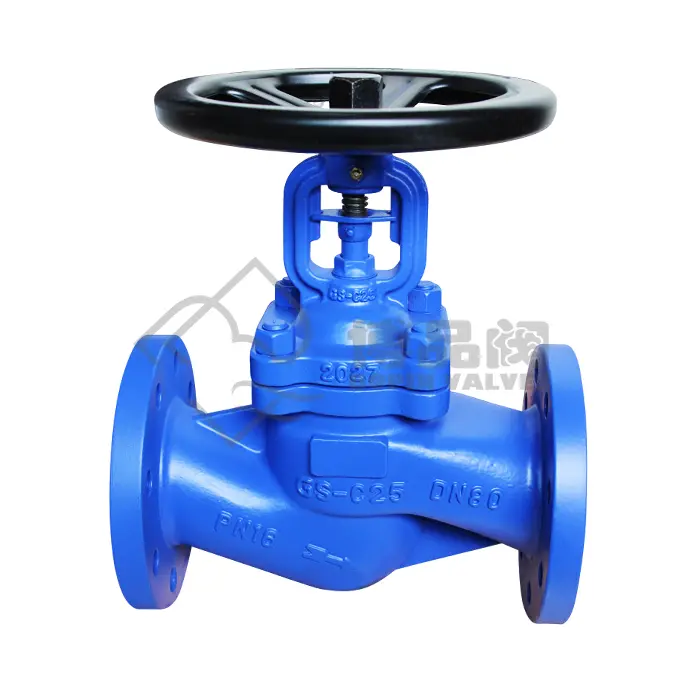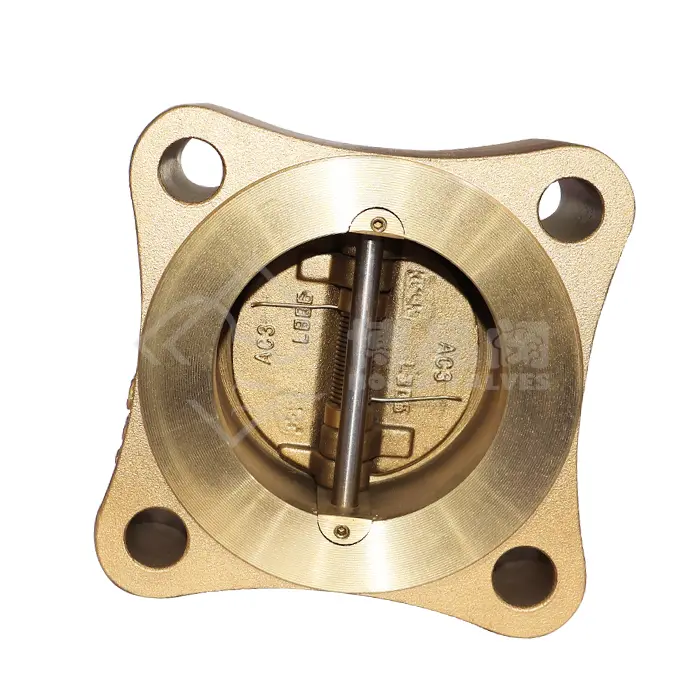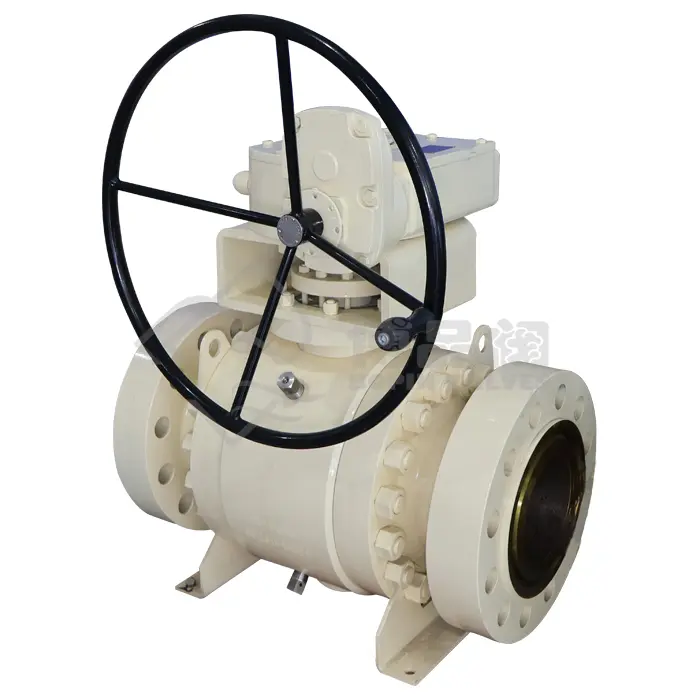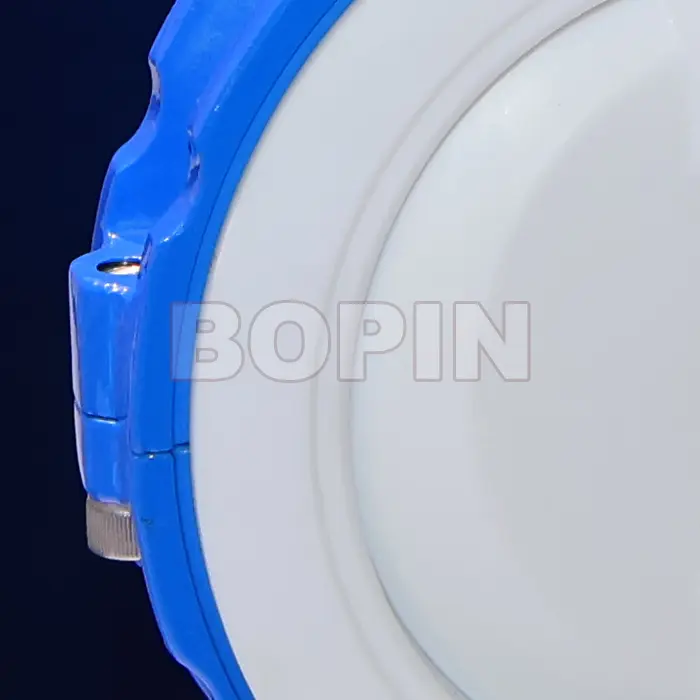0102030405
JIS 10K Wafer Type Split Body Fully PTFE Lined Butterfly Valve
Introduction to Butterfly Valves
Butterfly valves are quarter-turn rotational valves that use a disc to regulate fluid flow. The disc is mounted on a shaft, which is connected to an actuator. The operation involves rotating the disc to open or close the valve. These valves are preferred for applications requiring tight shutoff, simple operation, and cost-effectiveness.
The butterfly valve's design allows it to be lightweight, compact, and reliable for handling large flows of liquid or gas.
Understanding JIS 10K Rating
The term JIS 10K refers to the Japanese Industrial Standard (JIS) rating that defines the pressure rating of the valve. The "10K" designation indicates that the valve is designed to withstand pressures up to 10 MPa (MegaPascal), equivalent to approximately 1,450 psi.
JIS 10K is commonly used in Japan and regions where Japanese standards are adhered to, and valves with this rating are built to be durable and reliable under significant pressure conditions. These valves are usually engineered with heavy-duty materials to withstand pressure fluctuations and high-stress environments.
Wafer Type Construction
The Wafer Type design refers to a compact and space-efficient construction of the valve. The valve body is designed to fit between two flanges in a pipeline. Unlike the lug type, which has mounting holes for bolt connections at both ends, the wafer type is clamped between flanges using bolts on either side of the valve.
This design is particularly useful when space is limited, and it also offers cost advantages because it requires fewer materials and is lighter in weight. Furthermore, the wafer type construction is easier to install and maintain, reducing the overall cost of ownership.
Split Body Design
The split body feature of the valve refers to a construction where the valve body is divided into two halves. This design provides several key advantages:
Easy Maintenance: The split body construction allows for easier access to internal components like the disc, shaft, and liner for repair or replacement without needing to remove the entire valve from the pipeline.
Reduced Downtime: In case of any failure or wear of internal parts, maintenance becomes simpler, leading to reduced downtime for repairs.
Customizability: It allows for better customization of the valve, especially for applications that require specialized materials for corrosion or high-temperature resistance.
The split body design is particularly beneficial in industries where valves are frequently serviced or when specific components need to be replaced due to wear and tear.
Fully PTFE Lining
The PTFE (Polytetrafluoroethylene) lining is an integral feature of this butterfly valve. PTFE is a high-performance plastic known for its excellent chemical resistance, non-stick properties, and high-temperature stability. By lining the entire valve body with PTFE, the valve gains the following benefits:
Corrosion Resistance: PTFE is highly resistant to most chemicals and corrosive fluids, making it an ideal material for industries handling aggressive substances, such as chemicals, acids, and solvents.
Reduced Friction: The non-stick nature of PTFE reduces the friction between the valve components, leading to smoother operation and less wear and tear.
Non-reactive: PTFE is inert, meaning it will not react with most substances, ensuring that the flow of materials through the valve is not contaminated.
Improved Sealing: The lining enhances the sealing performance of the valve, ensuring tight shutoff and preventing leakage.
The fully PTFE-lined butterfly valve is especially valuable in processes where the fluid being transported is abrasive, high-temperature, or highly corrosive.
Key Features of the JIS 10K Wafer Type Split Body Fully PTFE Lined Butterfly Valve
Some of the prominent features of this valve include:
Compact and Lightweight: The wafer type design contributes to the valve’s small size and reduced weight, making it ideal for installations where space is limited.
Durability: With its PTFE lining, the valve is highly durable and can withstand the wear and tear of harsh environments, ensuring a longer lifespan.
Ease of Installation: The wafer type design simplifies installation since the valve can be mounted directly between flanges without requiring additional bolts or hardware.
Leak-Free Operation: The PTFE lining provides superior sealing capabilities, minimizing the chances of fluid leakage, which is especially important in hazardous applications.
Versatility: These valves are available in various sizes and pressure ratings, making them suitable for a wide range of industrial applications.
Applications of JIS 10K Wafer Type Split Body Fully PTFE Lined Butterfly Valve
The JIS 10K Wafer Type Split Body Fully PTFE Lined Butterfly Valve is suitable for various industrial applications, such as:
Chemical Processing: Used to regulate the flow of corrosive chemicals and acids in chemical plants.
Water Treatment: Ideal for controlling the flow of water in treatment plants, particularly in systems dealing with high-pressure water and wastewater.
Food and Beverage: In food processing, where hygienic and corrosion-resistant valves are required to handle acidic substances, such as fruit juices and dairy products.
Pharmaceuticals: Used to control the flow of sterile fluids and drugs in pharmaceutical production lines, ensuring product quality and preventing contamination.
Oil and Gas: Applied in systems that transport various fluids, including oil, gas, and petrochemicals, where both corrosion resistance and pressure handling are crucial.
Working Principle
The working principle of the JIS 10K Wafer Type Split Body Fully PTFE Lined Butterfly Valve is quite straightforward:
Opening the Valve: When the actuator is rotated (either manually or via a pneumatic/electric actuator), the valve’s disc rotates from a closed position to an open position. The rotation of the disc allows fluid to flow through the valve.
Shutting the Valve: Conversely, when the actuator rotates the disc back to the closed position, it seals against the valve body, restricting the flow of fluid and providing a tight shutoff.
Flow Control: The position of the disc can be adjusted to precisely control the flow rate. When the valve is partially open, it restricts the flow, allowing for more nuanced flow regulation.
The smooth operation of the valve is aided by the PTFE lining, which reduces friction and helps achieve a more efficient and controlled flow.
Advantages of Using a PTFE Lined Butterfly Valve
Chemical Compatibility: PTFE is highly compatible with a wide range of chemicals and aggressive substances, allowing these valves to be used in corrosive environments without degradation.
Low Maintenance: The non-stick properties of PTFE prevent buildup and clogging, reducing the frequency of maintenance.
Cost-Effective:PTFE-lined valves offer long-term cost savings by providing durability and requiring less maintenance over time.
Improved Performance: PTFE’s low friction ensures that the valve operates smoothly and with minimal wear, extending the life of the valve.





















